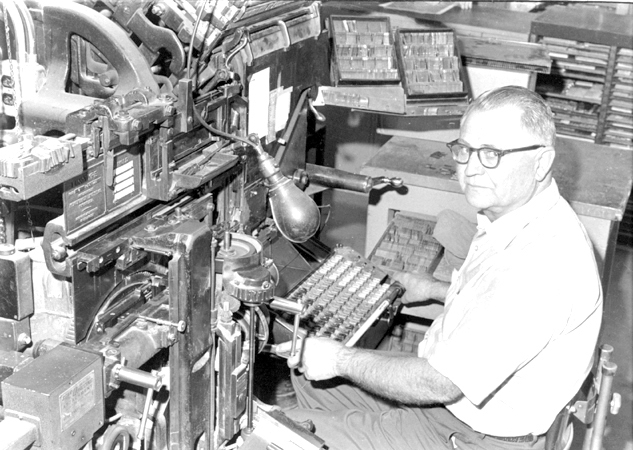
When words were cast in lead
For many years, the late Earl Williams of Hollister practiced a
dying craft. Here Williams sits at the keyboard of a linotype
machine, located at Free Lance Printing on Sixth Street.
When words were cast in lead
For many years, the late Earl Williams of Hollister practiced a dying craft. Here Williams sits at the keyboard of a linotype machine, located at Free Lance Printing on Sixth Street.
Newspapers today are produced in a process closely related to photography. But once upon a time, newspapers were printed using “hot type,” lines of letters cast from molten lead using linotypes.
A distinctive smell permeated the offices as the machines clattered away, dropping rows of type into trays. A fully-set newspaper page was a significant burden, weighing about 70 pounds.
Typesetters became adept at reading backwards to proof their work, adjusting the distance between lines with strips of lead foil to add “leading” so things would come out just right.
Sooner or later, every lineotype operator would drop a page of type right on deadline, a minor catastrophe that necessitated re-setting type. New staff were typically initiated when typesetters would pour water into a tray full of type. When the new guy was asked to stand over the page to proofread it, an operator would slam the type home with a mallet, sending a sheet of water into the victim’s face.
A linotype similar to this one can be viewed at the San Benito County Historical Park, south of Tres Pinos off Hwy. 25.
This photo and many others are among the items that can be viewed at the San Benito County Historical Museum, located in the Wapple House at Fifth and West streets. Museum hours are 1-3 p.m. every Saturday and Sunday. Admission is free.
Photo courtesy of the San Benito County Historical Society









